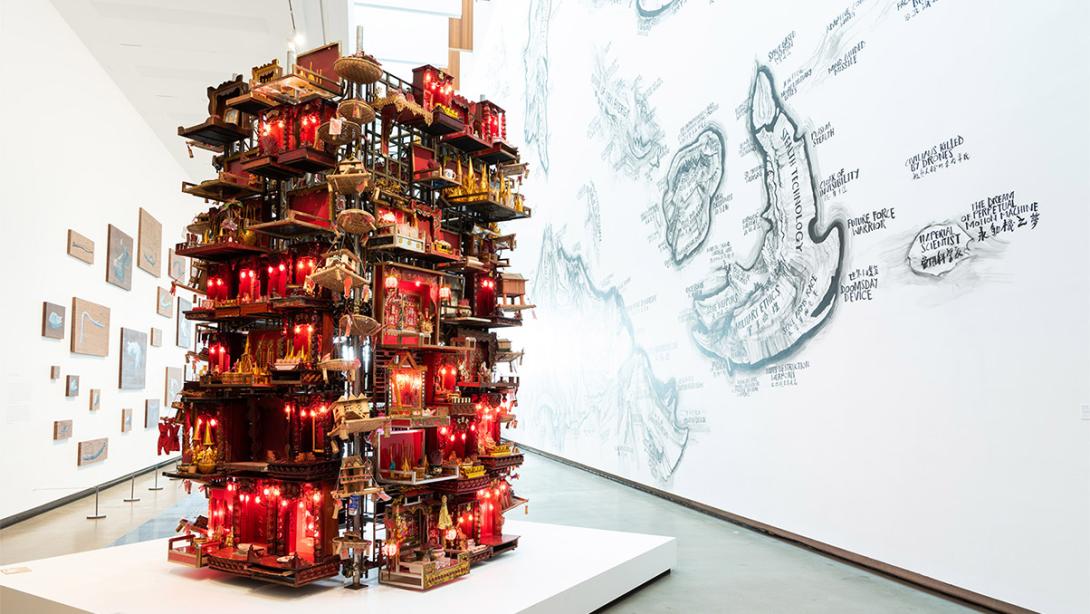Vuth Lyno
APT9
Born 1982 Phnom Penh, Cambodia
Lives and works in Phnom Penh, Cambodia
Vuth Lyno is interested in social transformation and development in Cambodia. In addition to his practice as an artist, he is a curator and artistic director of Sa Sa Art Projects, Phnom Penh’s only Cambodian artist-run space. His work is often participatory and collaborative, engaging specific Cambodian communities, and concerned with social issues and injustice. Previous works have included a photographic series reflecting on identity and memory within Cambodian LGBT communities, and a soundscape and installation inspired by the Kompong Pluk community, who live along the Tonle Sap River in Cambodia in unique stilted dwellings. Lyno is currently focused on exploring the legacy of the now demolished White Building in Phnom Penh, which was once home to a diversity of Cambodian artists, performers and craftspeople.
Listen to Vuth Lyno's favourite tunes on Spotify.

Vute Lyno / Cambodia b.1982 / House—Spirit 2018 installed in GOMA's Long Gallery for APT9, with Qiu Zhijie's Map of Technological Ethics (detail) 2018 seen in background, 2018 / Spirit houses, steel, door and window frames / Purchased 2018. QAGOMA Foundation / © Vute Lyno / Photograph: Natasha Harth, QAGOMA
The White Building stood in the heart of Phnom Penh, until its controversial demolition in 2017. Inaugurated in 1963 during Cambodia’s post-independence era, the building was evacuated during the Khmer Rouge era (1975–79), but subsequently became a vibrant hub for artists, musicians, performers and craftspeople, as well as an internationally renowned example of modern South-East Asian architecture.
Vuth Lyno forged close relationships with the diverse community of the more than 2000 residents of the White Building. With the destruction of the iconic building imminent – to make way for high-rise apartments – the artist collected the spirit houses (domestic temples or shrines) left behind by the residents or offered to him as they left. House – Spirit 2018 is constructed from over 100 of these shrines and recalls one of the modular columns of apartments that comprised the White Building. The framework is made of doors and steel structures similar to those of the building. These shrines represent the diverse belief systems of the members of this well-known community, and for Vuth, they capture its collective memory:
. . . the spirits have accumulated history and stories of the community and the neighbourhood. The spirits knew the anxieties and desires of the community, collected the stories and witnessed what happened in the neighbourhood. They are the archive or bank of knowledge, though paradoxically are inaccessible, safeguarded, and remain private.
